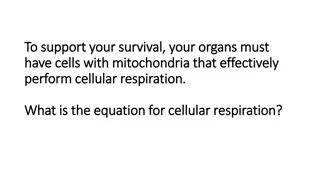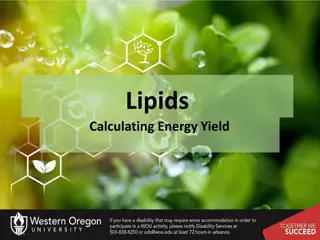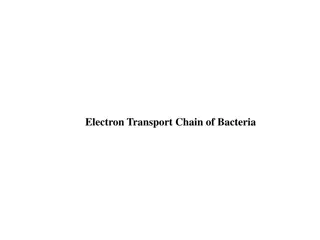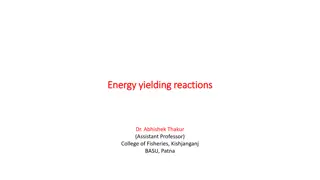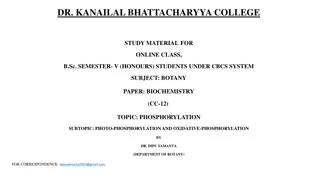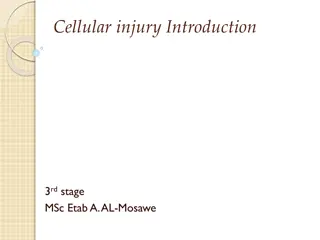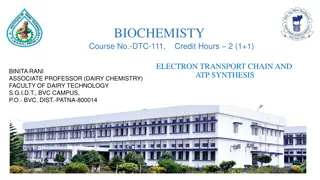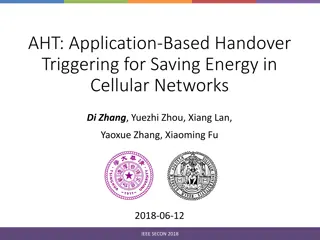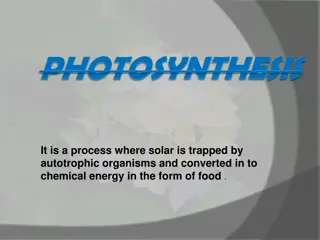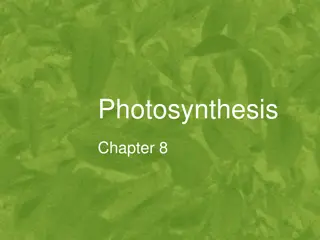Role of ATP and NAD in Cellular Energy Transfer
In the cellular activities, ATP and NAD play crucial roles in trapping, transferring energy, and electron transport. Know how ATP is formed from ADP and phosphate, the significance of NADP+ in electron transfer, and the energy conversion mechanisms of ATP and NAD. Explore the energy dynamics within cells and understand the processes of energy storage and release for cellular reactions. Discover the differences between low-energy molecules like ADP/NADP+ and high-energy molecules like ATP/NADPH, integral in photosynthesis and respiration.
Download Presentation

Please find below an Image/Link to download the presentation.
The content on the website is provided AS IS for your information and personal use only. It may not be sold, licensed, or shared on other websites without obtaining consent from the author.If you encounter any issues during the download, it is possible that the publisher has removed the file from their server.
You are allowed to download the files provided on this website for personal or commercial use, subject to the condition that they are used lawfully. All files are the property of their respective owners.
The content on the website is provided AS IS for your information and personal use only. It may not be sold, licensed, or shared on other websites without obtaining consent from the author.
E N D
Presentation Transcript
H2.2.8 Syllabus Objectives Explain the role of ATP and describe how it is formed from ADP + P Explain the role of NADP+ in trapping and transferring electrons and hydrogen ions in cell activities
Energy Carriers ATP , NADP+ and NAD+ play a vital role in trapping and transferring energy in cellular activities
ADP and ATP ADP is an abbreviation for Adenosine Diphosphate this is a molecule found in the cells of all organisms It is made of the base adenine , a 5 carbon sugar called ribose and 2 phosphate groups ADP is a low energy molecule
ADP and ATP If another phosphate is added to ADP it forms ATP (Adenosine Triphosphate) Extra energy is also added as there is an extra bond between the last two phosphate groups Addition of a phosphate like this is called Phosphorylation ATP is rich in energy and stores this energy carrying it around in the cell
ADP and ATP ATP cannot store energy for very long it breaks down releasing energy and converting back to ADP Most cells release energy from ATP 10 million times every second! This energy is used for cellular reactions
Learning Check What do ADP and ATP stand for? What base is found in ATP and ADP? What sugar is found in ATP and ADP? Which is a higher energy molecule? How does ADP become ATP? This process is called p.................................. How is the energy in ATP released?
NADP+ and NADPH NADP+ is a low energy molecule involved in photosynthesis NADP+ can combine with 2 high energy electrons and a proton to form NADPH NADPH is a very high energy molecule It s energy is used to form glucose in photosynthesis
NADP+ and NAD NAD+ is used in respiration It can combine with 2 high energy electrons and a proton to form NADH which is very high in energy Remember P for photosynthesis, NADP+ is used in photosynthesis NAD+ in respiration
Both NADH and NADPH release energy and protons when they break down into NAD+ and NADP+ These electrons, protons and energy are used by cells
Learning Check Is NADP+ used in photosynthesis or respiration? What combines with NAD+ and NADP+ to form NADH and NADPH? What do NADH and NADPH provide for reactions in cells? How do they provide these things?





